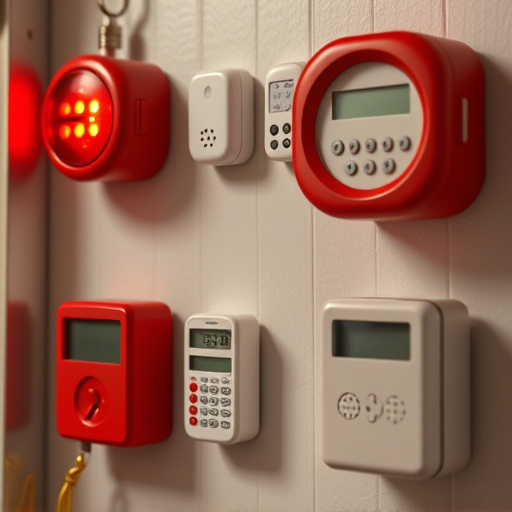Personal alarm devices with remote monitoring capabilities offer enhanced security and peace of mind through features like GPS tracking and customizable Personal Alarm Volume Adjustment Features. These devices cater to diverse needs, from daily use to high-risk environments, empowering users with adaptability and control. To maximize their benefits, users should prioritize encryption, firmware updates, optimal device placement, and personalized volume settings for effective threat deterrence without unnecessary panic.
Personal protection devices with remote monitoring are transforming the way we stay safe. This article provides an in-depth look at these innovative tools, starting with an overview of personal protection devices and how remote monitoring technology enhances their capabilities. We’ll explore crucial features, such as Personal Alarm with Volume Adjustment, and offer best practices for optimal use. By understanding these aspects, you can make informed decisions to ensure your safety.
- Understanding Personal Protection Devices: An Overview
- Remote Monitoring Technology: How It Works and Its Benefits
- Personal Alarm with Volume Adjustment: Features to Consider
- Staying Safe: Best Practices for Using Remote Monitoring Devices
Understanding Personal Protection Devices: An Overview
Personal protection devices have evolved significantly, incorporating remote monitoring capabilities that offer enhanced security. These devices are designed to provide individuals with a sense of safety and peace of mind in various situations, from everyday activities to high-risk environments. At their core, they serve as personal alarm systems, utilizing loud sounds and signals to deter potential threats and attract attention when needed.
One notable feature that sets these devices apart is the volume adjustment functionality. Users can customize the alarm’s intensity, ensuring it’s audible yet comfortable for daily use. This adaptability caters to diverse preferences and environments, making them versatile tools for anyone seeking personal protection. Additionally, remote monitoring allows users to maintain constant awareness of their surroundings, empowering them to take prompt action if required.
Remote Monitoring Technology: How It Works and Its Benefits
Remote monitoring technology in personal protection devices has revolutionized safety and peace of mind. This innovative feature allows users to track their location and receive real-time updates, ensuring prompt response during emergencies. It works by integrating GPS tracking with cloud-based software that streams data to a central control center or a user’s smartphone application. This enables authorities or designated contacts to monitor an individual’s movement and well-being from afar, providing an additional layer of security.
The benefits are multifaceted. For instance, remote monitoring can help in personal alarm scenarios, where the device’s loudspeaker and personal alarm volume adjustment features can attract attention and deter potential threats. It offers a sense of control, especially for individuals living alone or those with specific safety concerns. This technology is also valuable for elderly care, enabling family members to check in remotely and receive alerts if an accident occurs. Additionally, its ability to provide continuous surveillance makes it an effective deterrent against theft or unwanted intrusions.
Personal Alarm with Volume Adjustment: Features to Consider
When considering a personal alarm with volume adjustment, there are several key features to look out for. Firstly, ensure the device offers adjustable sound levels – this allows users to choose a volume that suits their situation and preferences, from subtle alerts to ear-splitting bursts of noise to attract attention quickly.
Additionally, seek devices with customizable alarms, allowing you to set different sounds or tones for various scenarios. This feature enhances versatility, as quiet environments may require a subtle alert while louder settings might necessitate a more powerful signal.
Staying Safe: Best Practices for Using Remote Monitoring Devices
Staying Safe: Best Practices for Using Remote Monitoring Devices
When it comes to personal protection, remote monitoring devices offer a powerful tool for enhancing safety. To make the most of these tools, users should prioritize privacy and security by ensuring strong encryption for all data transmission. Regularly updating firmware and keeping software up-to-date is also crucial to prevent vulnerabilities. Additionally, understanding the device’s range and signal strength is essential; users should test and optimize placement to ensure consistent connectivity.
Adjusting the personal alarm volume is a key feature that can significantly increase visibility and deter potential threats. Selecting an audible volume that is loud enough to startle and alert others without causing harm or panic is ideal. Users should also familiarize themselves with the device’s activation mechanisms, ensuring they can quickly and effectively trigger alerts when needed. Regular maintenance, such as testing buttons, sensors, and batteries, will guarantee optimal performance in critical situations.
Personal protection devices equipped with remote monitoring technology offer a powerful way to enhance safety, especially in emergency situations. By understanding how these devices work and implementing best practices, individuals can take control of their security. When choosing a personal alarm with volume adjustment features, consider options that provide clear audio signals at various decibel levels, ensuring maximum effectiveness. Staying vigilant and keeping these devices readily accessible could prove invaluable in unforeseen circumstances.
